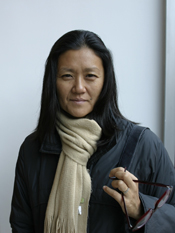At the dawn of a new decade, Rutgers Today challenged university scholars across half a dozen disciplines – economics, American studies, history, political science, law, science, and sociology – to predict what the next few years hold in store. Based on the opening years of the new millennium, we asked, what trends do you see evolving, and what might life look like when this newly hatched decade draws to a close? In this article, we interview Jamie Lew.

“The country’s ethnic makeup is being transformed even as we speak. Over 50 percent of all immigrants are coming from countries in Central and Latin America, with an additional 25 percent from countries in Asia,” says Lew, associate professor in the Department of Sociology and Anthropology, Newark, and the author of Asian Americans in Class: Charting the Achievement Gap Among Korean American Youths. (Teachers College Press 2006)
One of the fastest growing segments of the population represents the children of these immigrants.
In California, such youngsters now comprise between 50 and 55 percent of the student population, a figure Lew sees echoed in New York and other urban school districts. In the next 10 years, she predicts, those numbers will only increase.
Along with these numbers comes research increasingly indicating that these so-called “second generation” youngsters do best academically and socially if they retain their ethnic ties and remain involved with their parents’ immigrant networks and enclaves.
“We’re deeply challenging the notion of ‘becoming American,’ ” says Lew, noting that previous waves of newcomers, predominantly from Europe, were encouraged to assimilate as quickly as possible -- frequently at the cost of leaving behind cherished languages and customs.
This is not a model that will work in the 21st century, she cautions.
“More and more people are finding that the kids who are coming now, especially those residing in urban areas, need close ties to their social and ethnic enclaves to succeed. Schools will have to recognize that supporting students’ native language, nurturing their ethnic identities, and reinforcing ties to immigrant networks both here and abroad are some of the best resources they have when it comes to educating these students,” Lew says.
Moreover, issues of class and race will become more salient for schools, she believes. While poor immigrants are settling mostly in urban areas, the Rutgers academic observes, wealthy immigrants are opting for the suburbs, bypassing the urban immigrant experience historically reflected in immigrant narratives.
“Such trends have important implications for how class will intersect with race relations in this country,” Lew predicts.